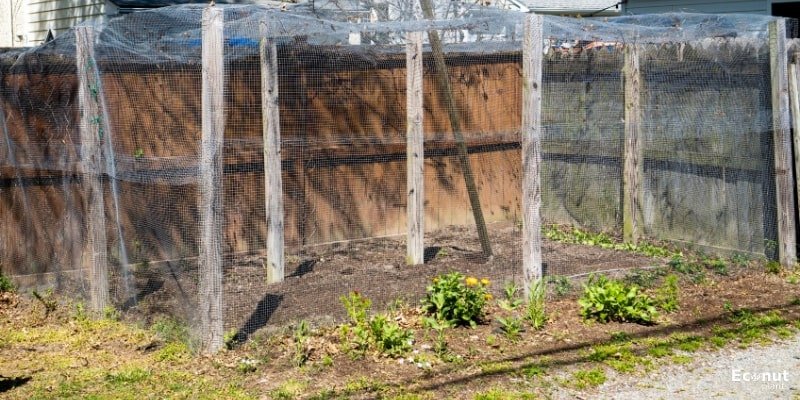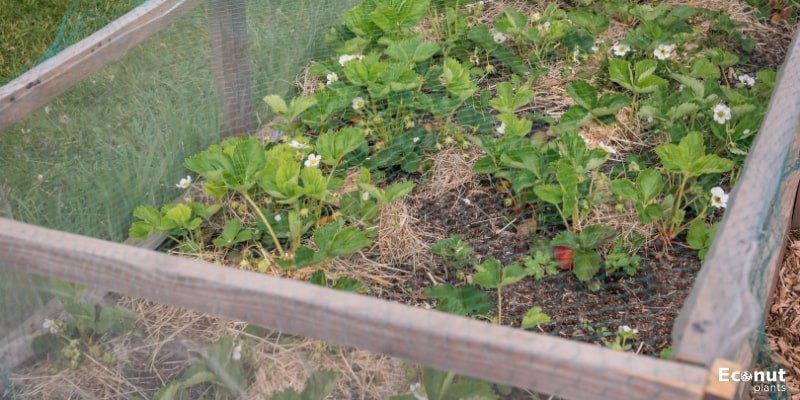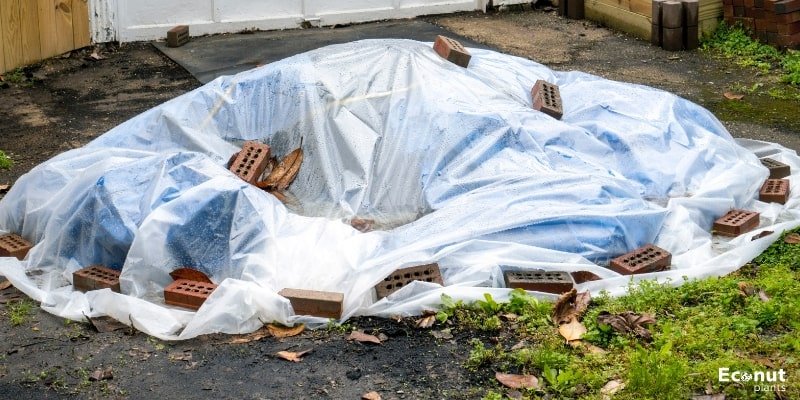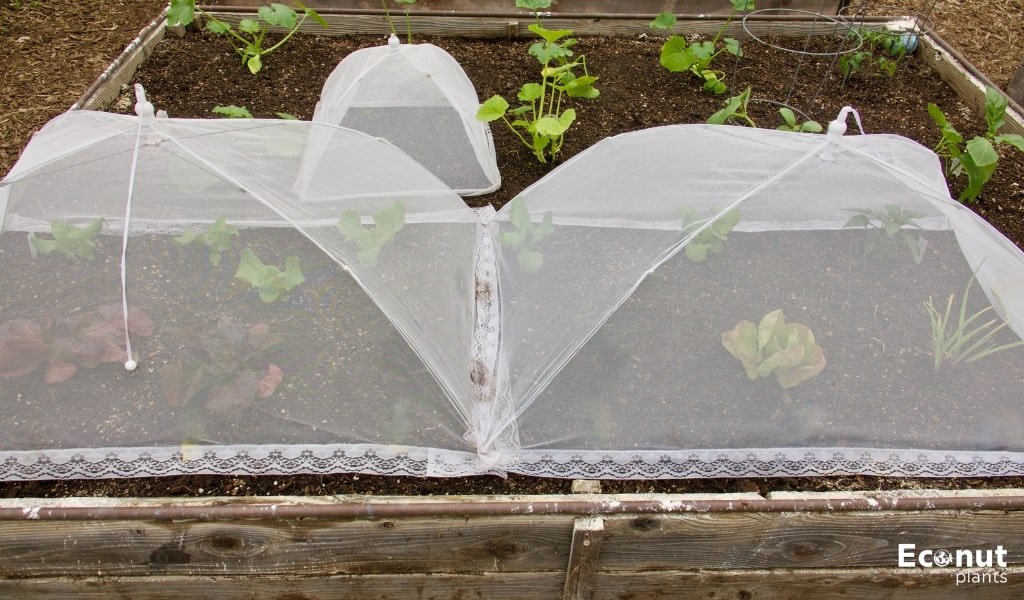Raised Bed Covers like portable cold frames, row coverings, and little hoop tunnels are my keys to a fruitful and flourishing food garden. By employing these adaptable coverings, I can extend the harvest season into the autumn and winter, enhance my production, and lessen the damage caused by weather and pests.
The numerous applications of small and large covers in a home vegetable garden are covered in my book, Growing Under Cover. For additional details on using protective covers in your garden, continue reading.
How Does a Raised Bed Cover Help?

As we previously explained, the purpose of a raised garden bed cover is to safeguard your valuable plants. Nonetheless, certain ones repel particular threats better than others. When making any decisions about covers, it is highly advised that you take into account what you are attempting to protect your backyard from.
Greenery loves sun and rain, but too much of either can be detrimental. Direct sunshine and high temperatures are bad for many garden plants, especially those that are edible. The shade cloth’s design takes that into account. It’s a woven fabric, typically made of filament or plastic that partially screens the light while still providing shade for the plant.
Usually placed over an elevated garden bed cover, it is used as shade during the warmest portion of the day. Plant coverings placed around or on top of the bed are prone to blowing off. Make sure the bed is weighted or that the bed covers are securely fastened to the bed if you reside in an area where gales frequently occur.
Protection from Animal

We love our pets, even though they could wreak havoc on the landscape. While more robust coverings are ideal, most should keep them out. We suggest erecting a strong garden bed barrier for Fido’s protection.
Panels with animals depicting power are a great option because they are made to feature strong species. They are made by welding wire into a grid fence. Using this fencing as a structural foundation looks great with bed linens.
Though we want our plants to be secure, never forget that animals still need food. If you live in an area where wild herbivores are common, you may want to think about leaving a bed uncovered to create a vegetative free-for-all.
Protection from Pests and Diseases
You will always find flying insects wherever you plant yourself. This is the reason behind our love of floating row coverings. Because these pest deterrents are lightweight and portable, they are perfect for stopping pests from laying eggs and feasting on plants. Tightly woven fabric or solid sheeting used as a floating row cover works best to ward off these insects.
Securing your floating row cover at the soil’s level or placing fine mesh at the bed’s base are two practical ways to keep them out. Unfortunately, keeping insects out also keeps pollinators from getting to them. You must remove or unfold the coverings when the plants are ready to bloom.
What don’t garden coverings protect against?
Regretfully, no amount of makeup can solve every issue facing humanity. They cannot, regardless of configuration, shield your garden from pests and diseases that are rooted in the soil or from excessive heat.
It can also lock in humidity, which is helpful or harmful depending on the plant and the material you choose for the cover.
Garden Bed Cover Frame Types

The frame of a protective cover dictates its quality, and there are many options! Here is a list of the top three materials for frames.
PVC
The DIY enthusiast is truly blessed with PVC pipe. It comes in a variety of shapes and may be assembled in a way that makes it akin to adult tinker toys. You may create square buildings, angled roofs, and even spherical hoop dwellings. PVC is simple to work with, lightweight, and disassembled for storage. Plus, it’s quite cheap!
PVC pipe cannot withstand strong winds due to its low weight unless it is fastened down. However, since you can’t merely jam a nail through the pipe, it can also be challenging. An attachment component that is compatible with both your garden bed material and PVC is required. Since this kind of frame is difficult to hinge, there are also fewer options for openings.
Metal
The strongest frames are probably made of metal. Although they are just as strong as wood, they are resistant to decay, heat, and insect damage. However, making metal frames yourself can be quite costly and difficult. In addition to being typically heavy, metal warms up rapidly in the afternoon sun.
Wood
There are few things more fundamental than wood, a hammer, and nails. This well-tried material readily accommodates hinges, making it ideal for cold frames and mobile greenhouses. Wooden frames are long-lasting and sufficiently stiff to withstand bad weather.
This is one of the most costly solutions; as not everyone is skilled in carpentry, this is especially true for those who choose to purchase the frame rather than build it themselves. Additionally, these frameworks are typically big, bulky, and difficult to transfer from one raised garden bed to another.
Types of Garden Coverings

There’s a wide selection of cover materials available now that you’ve chosen your frame. Look at various popular raised bed coverings and their materials, keeping in mind the material that is suggested for your situation.
Fabric
Using shade cloth is a well-liked way to keep your plants safe. Polyester is used in weaving as well as knitting. Knitted material is more robust, lightweight, and ideal for gardening. Cut-woven fabric is heavier and will unravel or tear more easily. Unlike solid materials, which retain heat, both kinds provide ventilation.
A shade cloth’s job is to keep out harmful light while allowing just enough in to facilitate photosynthesis. Their degrees of filtering differ depending on the market because of this. For instance, a 70% darkened cloth reflects 70% of the incident light. Possible ranges for these levels are 5% to 90%.
Floating row coverings are another application for woven cloth. It might be extremely light, very heavy, or any combination of the two. The thick, hefty cloth works well as a frost blanket and may ward off the elements.
Mesh
Mesh with various whole diameters is available. If you want to keep animals out, go for a large-hole mesh because it won’t interfere with the weather. Small-hole mesh is better suited for smaller creatures, such as birds.
Although almost anything can be used to make mesh, gardeners typically use polyethylene or polypropylene. It can withstand UV rays and is lightweight and affordable.
Metal
This group includes fence materials such as chicken wire. The metal is long-lasting and performs its function well. Hardware cloth or chicken wire are the two materials we suggest utilizing to make a raised bed cover you.
It’s a roll of flexible, gridded wire rather than a cloth. Without compromising quality, hardware cloth is far simpler to work with, store, and cut than chicken wire.
Plastic
This covers a wide range of sturdy, water-resistant materials. They will be divided into flexible and rigid materials. There are plastic panels on the rigid side. Usually smooth or corrugated, they are composed of sturdy polycarbonate.
Plastic sheets are an example of a flexible material that fits most constructions and is simple to work with. Translucent tarps, which are woven tarps with an additional layer of clear plastic, are one common kind. These materials are available in a range of opacities and thicknesses.
Conclusion
A raised garden bed cover system will greatly enhance the overall growth and productivity of your garden when added to your regular gardening routine.
Everything you learn about gardening improves it, from the benefits of these systems to the differences between PE and net covers. With the right cleaning and upkeep, these coverings can be kept in peak operating order and have their lifespan extended.

